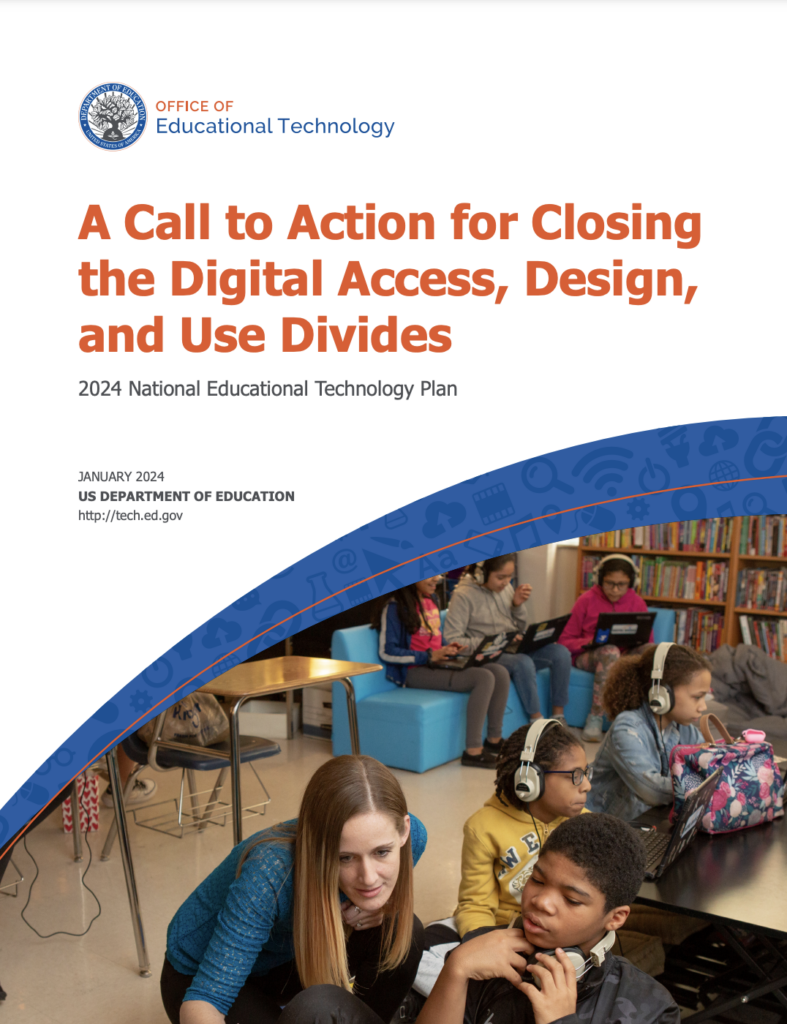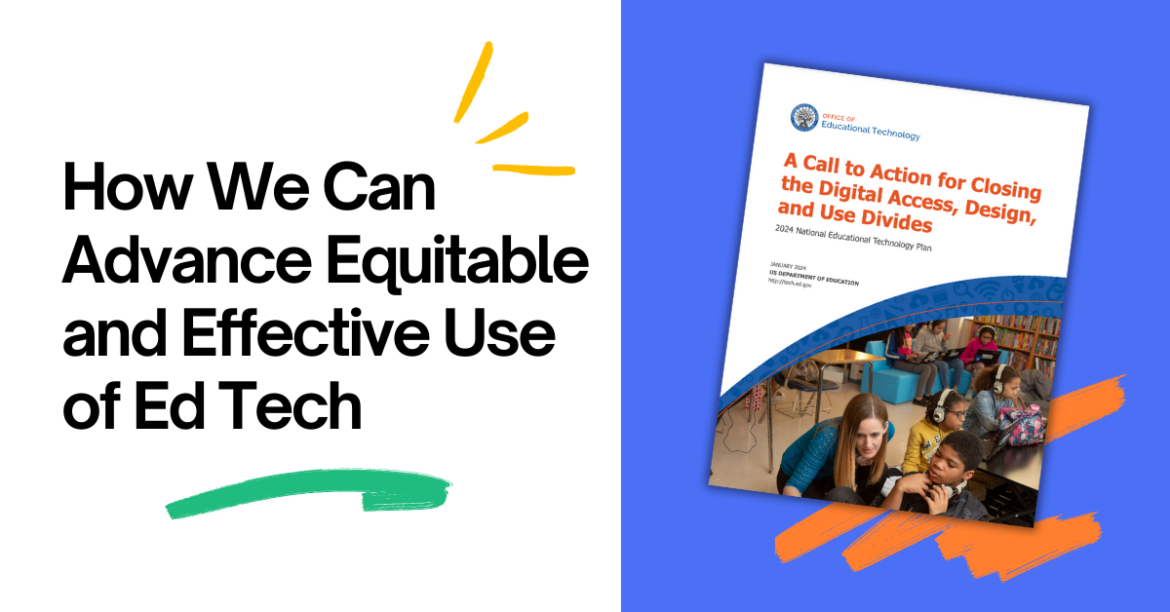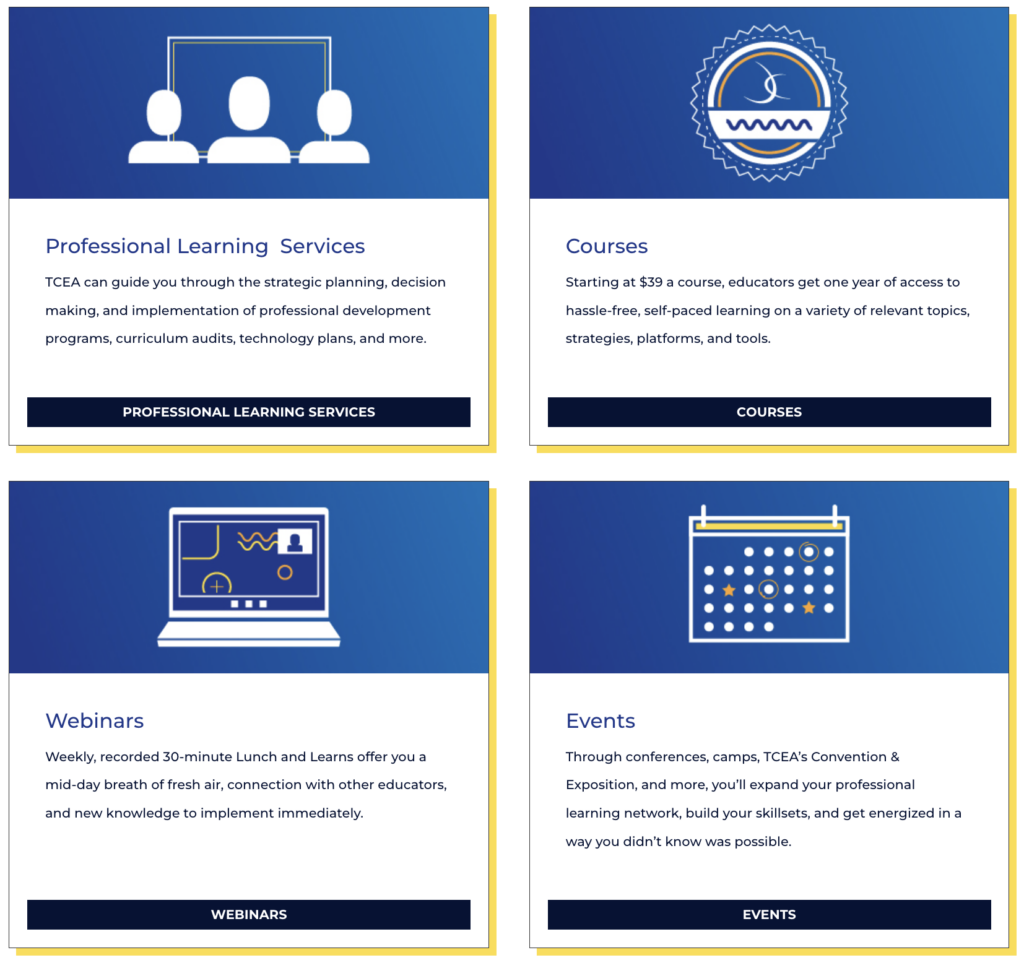The 2024 National Educational Technology Plan (NETP) recently unveiled by the U.S. Department of Education marks a significant milestone in educational technology. Titled “A Call to Action for Closing the Digital Access, Design, and Use Divides,” the NETP underlines a strategic shift from merely assessing the landscape of educational technology to addressing specific challenges that hinder its transformative potential in enhancing teaching and learning. Here’s a breakdown of how the plan addresses these challenges and the role organizations like the Texas Computer Education Association (TCEA) can play in overcoming them.

Somewhere between the promise of transformation and the barriers to realizing that promise lies the potential for states, districts, and schools to build systems that better ensure that ed tech’s promise is afforded to all students, no matter their geography, background, or individual context.
A Call to Action for Closing the Digital Access, Design, and Use Divides, pg. 8
The Three Digital Divides Framed by the NETP
1. The Digital Use Divide
At the core of the digital use divide is the need to enhance how students utilize technology in learning. This divide isn’t just about logging in but engaging students in dynamic ways to use technology creatively and critically. The NETP emphasizes applications that enable students to explore, create, and critically analyze academic content through digital means, which not only increases engagement but also promotes deeper understanding and retention of knowledge.
2. The Digital Design Divide
Educators are the architects of the learning experience, and the digital design divide focuses on empowering them through professional development. It’s about giving teachers the tools and knowledge to craft educational experiences that leverage technology effectively. This includes training in the latest digital tools and innovative teaching methods that cater to diverse learner needs.
3. The Digital Access Divide
Access remains a fundamental barrier for many students and educators. The 2024 NETP highlights not just the importance of physical access to devices and connectivity but also the need for digital content that is inclusive and accessible to all learners. This means ensuring resources are available for diverse learning needs, including those related to health, safety, and digital citizenship.
TCEA’s Role in Meeting NETP Goals
Professional Development and Educator Support
TCEA offers a plethora of resources and training for educators to hone their technology integration skills. Through workshops, certifications, and webinars, educators can learn to design more engaging and effective learning experiences. This directly addresses the Digital Design Divide by equipping teachers with the skills to implement and sustain technology-driven education.
Advocacy and Resources for Equitable Access
TCEA advocates for policies that ensure equitable access to technology. By working with policymakers, educational leaders, and the community, TCEA helps to push for the necessary funding and initiatives that close the access gap. This includes promoting affordability and availability of high-speed internet and modern devices to all educational districts, particularly in underserved areas.
Community Building and Collaboration
A major strength of TCEA is its ability to foster community among educators. Through conferences, a resource library, and an online community, educators share insights, strategies, and experiences with their peers, creating a rich pool of knowledge and support. This collaborative environment helps in mitigating the challenges of the digital design divide by fostering a community of practice that supports continuous learning and adaptation in the use of technology.




